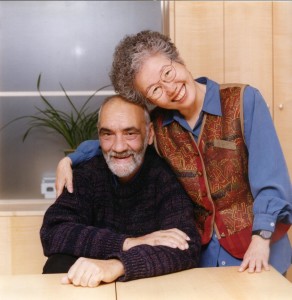In 1982 I had the good fortune to become associated with the Brief Family Therapy Center in Milwaukee, the place where Solution Focused Brief Therapy (BFTC) was born. I was looking for a place where I could get back into practice and BFTC provided that through their trainee program where we practiced in teams and used one-way mirrors. After completing the trainee program I was invited to remain at BFTC on a part-time basis to conduct research and continue my clinical work, eventually becoming Director of Research before leaving Milwaukee in 1990 to move to Case Western Reserve University in Cleveland.
Little did I know at the time how important my relationships with Steve de Shazer and Insoo Kim Berg would become. Steve and Insoo became dear friends over the years and stayed in touch until their untimely deaths in 2005 and 2007 respectively. Steve was an independent and innovative thinker and theoretician, steeped in philosophy and epistemology, and was the intellectual leader of the group and the one who did most of the writing initially. Insoo was a masterful clinician and trainer with boundless energy and a passion to improve services for clients, particularly in the public child welfare system. Insoo wrote many books later on in her career.
 So what exactly is Solution-Focused Brief Therapy (SFBT)? In a nutshell it is a short-term goal-focused therapeutic approach which helps clients change by focusing on solutions rather than problems. SFBT uses the Miracle Question, a technique developed at BFTC, to help clients imagine their lives without the problem and begin constructing a concrete picture of what that will be like. As we discovered, elements of the solution (i.e., exceptions to the problem) are often already present in clients’ lives and often become the foundation for lasting change. SFBT is a post modern therapy approach that incorporates social constructionist thinking. A key attribute of SFBT is the focus on “change talk”, getting clients to talk about what they want to have happen and what is working rather than talking about the problem and how bad things are. The website of the Association for Solution Focused Brief Therapy is a good place to go for more information on SFBT.
So what exactly is Solution-Focused Brief Therapy (SFBT)? In a nutshell it is a short-term goal-focused therapeutic approach which helps clients change by focusing on solutions rather than problems. SFBT uses the Miracle Question, a technique developed at BFTC, to help clients imagine their lives without the problem and begin constructing a concrete picture of what that will be like. As we discovered, elements of the solution (i.e., exceptions to the problem) are often already present in clients’ lives and often become the foundation for lasting change. SFBT is a post modern therapy approach that incorporates social constructionist thinking. A key attribute of SFBT is the focus on “change talk”, getting clients to talk about what they want to have happen and what is working rather than talking about the problem and how bad things are. The website of the Association for Solution Focused Brief Therapy is a good place to go for more information on SFBT.
Empirical support for SFBT
Over the years I have been interested in the evidence base for SFBT and have published several reviews, the most recent in 2013 with Lance Peterson:
Gingerich, W. J., & Peterson, L. T. (2013). Effectiveness of solution-focused brief therapy: A systematic qualitatative review of controlled outcome studies. Research on Social Work Practice. (Click on the link to access a copy.)
Abstract
Objective: We review all available controlled outcome studies of solution-focused brief therapy (SFBT) to evaluate evidence of its effectiveness. Method: Forty-three studies were located and key data abstracted on problem, setting, SFBT intervention, design characteristics, and outcomes. Results: Thirty-two (74%) of the studies reported significant positive benefit from SFBT; 10 (23%) reported positive trends. The strongest evidence of effectiveness came in the treatment of depression in adults where four separate studies found SFBT to be comparable to well-established alternative treatments. Three studies examined length of treatment and all found SFBT used fewer sessions than alternative therapies. Conclusion: The studies reviewed provide strong evidence that SFBT is an effective treatment for a wide variety of behavioral and psychological outcomes and, in addition, it may be briefer and therefore less costly than alternative approaches.
You can find more of my writings on Solution Focused Brief Therapy on my resume.
Useful links
- Solution Focused Brief Therapy Association – North American Association
- European Brief Therapy Association (EBTA) – research protocol; also includes bib of SFBT research studies
- SFT – SFT-L mailing list and other resources; maintained by Harry Korman and colleagues
- Dr. Alasdair Macdonald – Alasdair maintains an up-to-date list of SFBT evaluation research
- Harry and Jocelyne Korman – an informative Swedish site; Harry organizes the SFT-L listserv
- Mental Research Institute – where strategic therapy was born
- Ludwig Wittgenstein – linguistic philosopher; ideas influenced development of SFBT

